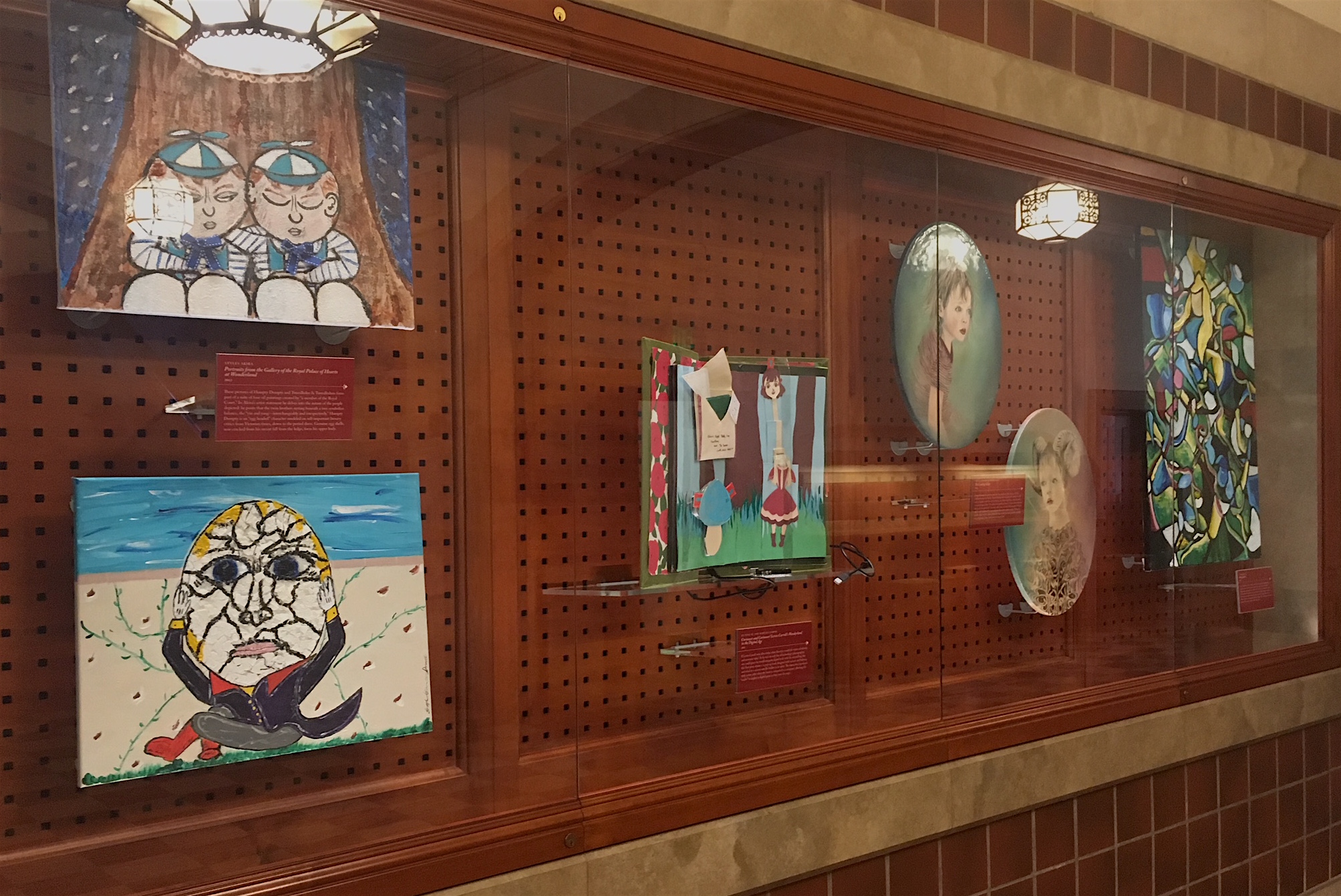Competition honors Lewis Carroll
A step into the underground level of Doheny Memorial Library transports visitors to a version of Lewis Carroll’s Wonderland in an art gallery that pays homage to the author’s writing and spirit.

The underground level of Doheny Memorial Library is home to an art gallery about Alice’s Adventures in Wonderland author Lewis Carroll. Tyson Gaskill | Daily Trojan
In 2000, USC alumnus George Cassady and his wife Linda Cassady donated 110 books related to the life and works of Lewis Carroll to USC libraries, the author best-known for his works Alice’s Adventures in Wonderland and Through the Looking Glass. The Cassadys wanted students to be aware of the donated items and be able to use and study the collection.
“We wanted to ensure that students knew about and used the collection … that it would be a collection that is alive and world-class … so we needed to grow that collection,” Linda Cassady said.
To expand upon the existing collection, the Cassadys collaborated with USC Libraries to launch the annual Wonderland Awards in 2005. According to USC Libraries, the awards competition “encourages new scholarship and creative work related to [Carroll].”
Tyson Gaskill, the executive director of communications and events for USC Libraries, emphasized that the competition serves to spur interest in Carroll’s contributions to modern literature and pop culture.
“I can’t even imagine how many results you would get from just typing in ‘down the rabbit hole’ — that phrase alone just seems to pop up everyday, everywhere you go,” Gaskill said.
Gaskill said that though Carroll is mainly known for his contributions to fiction, he was also a polymath who exhibited his talents in diverse fields. On top of teaching mathematics at Oxford University, Carroll produced logical games, word puzzles and portrait photography.
Thus, the competition was also established as a multidisciplinary incentive for students to set fields they would not otherwise explore.
“People’s imagination[s] [are] really broad,” Linda Cassady said. “They have had an opportunity to do what they would not normally do. A mathematician does art, a molecular biologist does puzzle games … Students also get to appreciate the work that other people do at the gallery.”
According to Linda Cassady, throughout the past 14 years, submissions have become increasingly radical and technological in nature.
“The change has been that some of the pieces have gotten much more electronic,” Linda Cassady said. “So we have more incredibly detailed animation. We also have more teamwork, because when you are doing an animation, you need a writer, artist, programmer, etc.”
For example, last year’s first prize winners were USC students majoring in interactive media: Yiwen Dai, Kelsey Rice and Jung-Ho Sohn. The team wanted to introduce a distinctive project that utilized interactive media to the collection, which led them to experiment with augmented reality.
Instead of a technological demonstration, the group wanted to create an interactive game piece based on coming of age as the main theme.
“We wanted the piece to be technology that people can experience,” Dai said. “The core mechanic of this experience is that we are trying to create a simulation of growing up and reflecting on previous experiences.”
Linda Cassady said the artistic statement is crucial to convey the participant’s creative process and inspiration taken from Carroll’s collection. A well-crafted artistic statement bolsters the project’s complexity and helps the judges understand the entrants’ unique interpretations, she said.
“[The Artistic statements] helps us understand what the person submitting the piece is moved by,” Linda Cassady said. “Sometimes it is quite ingenious … sometimes it is part of the discovery … The piece becomes much more complex and Carrollian as we see the hidden meaning in that work.”
According to Gaskill, the Wonderland competition has continued to expand, as submissions have increased in both volume and quality.
“Students are seeing what’s happened before and they are saying, ‘That is a really good idea. Now how about I take it to the next level?’” Gaskill said. “So they are being influenced by past competition submissions and taking them to new directions.”
